[English] 日本語
 Yorodumi
Yorodumi- PDB-3moq: Amyloid beta(18-41) peptide fusion with new antigen receptor vari... -
+ Open data
Open data
- Basic information
Basic information
| Entry | Database: PDB / ID: 3moq | ||||||
|---|---|---|---|---|---|---|---|
| Title | Amyloid beta(18-41) peptide fusion with new antigen receptor variable domain from sharks | ||||||
 Components Components | New antigen receptor variable domain,P3(40) peptide from Amyloid beta A4 protein,New antigen receptor variable domain | ||||||
 Keywords Keywords | NEUROPEPTIDE / IMMUNE SYSTEM / AB-IGNAR / AB-12Y-2 / RECEPTOR / AMYLOID / GLYCOPROTEIN / MEMBRANE / PROTEASE INHIBITOR / SERINE PROTEASE INHIBITOR / TRANSMEMBRANE / AMYLOID BETA FUSION WITH IGNAR / CHIMERA OF IMMUNE SYSTEM AND AMYLOID PEPTIDE | ||||||
| Function / homology |  Function and homology information Function and homology informationamyloid-beta complex / growth cone lamellipodium / cellular response to norepinephrine stimulus / growth cone filopodium / microglia development / collateral sprouting in absence of injury / Formyl peptide receptors bind formyl peptides and many other ligands / axo-dendritic transport / regulation of Wnt signaling pathway / regulation of synapse structure or activity ...amyloid-beta complex / growth cone lamellipodium / cellular response to norepinephrine stimulus / growth cone filopodium / microglia development / collateral sprouting in absence of injury / Formyl peptide receptors bind formyl peptides and many other ligands / axo-dendritic transport / regulation of Wnt signaling pathway / regulation of synapse structure or activity / axon midline choice point recognition / astrocyte activation involved in immune response / NMDA selective glutamate receptor signaling pathway / regulation of spontaneous synaptic transmission / mating behavior / growth factor receptor binding / peptidase activator activity / Golgi-associated vesicle / PTB domain binding / positive regulation of amyloid fibril formation / Insertion of tail-anchored proteins into the endoplasmic reticulum membrane / astrocyte projection / Lysosome Vesicle Biogenesis / neuron remodeling / Deregulated CDK5 triggers multiple neurodegenerative pathways in Alzheimer's disease models / nuclear envelope lumen / dendrite development / positive regulation of protein metabolic process / TRAF6 mediated NF-kB activation / signaling receptor activator activity / Advanced glycosylation endproduct receptor signaling / negative regulation of long-term synaptic potentiation / modulation of excitatory postsynaptic potential / main axon / transition metal ion binding / The NLRP3 inflammasome / regulation of multicellular organism growth / intracellular copper ion homeostasis / ECM proteoglycans / regulation of presynapse assembly / positive regulation of T cell migration / neuronal dense core vesicle / Purinergic signaling in leishmaniasis infection / positive regulation of chemokine production / Notch signaling pathway / cellular response to manganese ion / clathrin-coated pit / extracellular matrix organization / neuron projection maintenance / astrocyte activation / ionotropic glutamate receptor signaling pathway / positive regulation of calcium-mediated signaling / Mitochondrial protein degradation / positive regulation of mitotic cell cycle / axonogenesis / protein serine/threonine kinase binding / response to interleukin-1 / platelet alpha granule lumen / cellular response to copper ion / cellular response to cAMP / positive regulation of glycolytic process / central nervous system development / dendritic shaft / trans-Golgi network membrane / endosome lumen / positive regulation of long-term synaptic potentiation / adult locomotory behavior / positive regulation of interleukin-1 beta production / learning / Post-translational protein phosphorylation / positive regulation of JNK cascade / locomotory behavior / serine-type endopeptidase inhibitor activity / microglial cell activation / positive regulation of non-canonical NF-kappaB signal transduction / cellular response to nerve growth factor stimulus / TAK1-dependent IKK and NF-kappa-B activation / regulation of long-term neuronal synaptic plasticity / recycling endosome / synapse organization / visual learning / response to lead ion / positive regulation of interleukin-6 production / Golgi lumen / cognition / Regulation of Insulin-like Growth Factor (IGF) transport and uptake by Insulin-like Growth Factor Binding Proteins (IGFBPs) / endocytosis / cellular response to amyloid-beta / neuron projection development / positive regulation of inflammatory response / positive regulation of tumor necrosis factor production / Platelet degranulation / heparin binding / regulation of translation / regulation of gene expression / early endosome membrane / G alpha (i) signalling events / perikaryon / G alpha (q) signalling events / dendritic spine Similarity search - Function | ||||||
| Biological species |  Orectolobus maculatus (spotted wobbegong) Orectolobus maculatus (spotted wobbegong) Homo sapiens (human) Homo sapiens (human) | ||||||
| Method |  X-RAY DIFFRACTION / X-RAY DIFFRACTION /  SYNCHROTRON / SYNCHROTRON /  MOLECULAR REPLACEMENT / Resolution: 2.054 Å MOLECULAR REPLACEMENT / Resolution: 2.054 Å | ||||||
 Authors Authors | Streltsov, V.A. | ||||||
 Citation Citation |  Journal: J.Neurosci. / Year: 2011 Journal: J.Neurosci. / Year: 2011Title: Crystal Structure of the Amyloid-{beta} p3 Fragment Provides a Model for Oligomer Formation in Alzheimer's Disease Authors: Streltsov, V.A. / Varghese, J.N. / Masters, C.L. / Nuttall, S.D. | ||||||
| History |
|
- Structure visualization
Structure visualization
| Structure viewer | Molecule:  Molmil Molmil Jmol/JSmol Jmol/JSmol |
|---|
- Downloads & links
Downloads & links
- Download
Download
| PDBx/mmCIF format |  3moq.cif.gz 3moq.cif.gz | 211.9 KB | Display |  PDBx/mmCIF format PDBx/mmCIF format |
|---|---|---|---|---|
| PDB format |  pdb3moq.ent.gz pdb3moq.ent.gz | 171.9 KB | Display |  PDB format PDB format |
| PDBx/mmJSON format |  3moq.json.gz 3moq.json.gz | Tree view |  PDBx/mmJSON format PDBx/mmJSON format | |
| Others |  Other downloads Other downloads |
-Validation report
| Summary document |  3moq_validation.pdf.gz 3moq_validation.pdf.gz | 452.3 KB | Display |  wwPDB validaton report wwPDB validaton report |
|---|---|---|---|---|
| Full document |  3moq_full_validation.pdf.gz 3moq_full_validation.pdf.gz | 459.2 KB | Display | |
| Data in XML |  3moq_validation.xml.gz 3moq_validation.xml.gz | 26.7 KB | Display | |
| Data in CIF |  3moq_validation.cif.gz 3moq_validation.cif.gz | 39.1 KB | Display | |
| Arichive directory |  https://data.pdbj.org/pub/pdb/validation_reports/mo/3moq https://data.pdbj.org/pub/pdb/validation_reports/mo/3moq ftp://data.pdbj.org/pub/pdb/validation_reports/mo/3moq ftp://data.pdbj.org/pub/pdb/validation_reports/mo/3moq | HTTPS FTP |
-Related structure data
| Related structure data |  1verS S: Starting model for refinement |
|---|---|
| Similar structure data |
- Links
Links
- Assembly
Assembly
| Deposited unit | 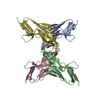
| ||||||||
|---|---|---|---|---|---|---|---|---|---|
| 1 | 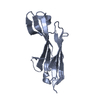
| ||||||||
| 2 | 
| ||||||||
| 3 | 
| ||||||||
| 4 | 
| ||||||||
| 5 |
| ||||||||
| Unit cell |
|
- Components
Components
| #1: Protein | Mass: 13466.129 Da / Num. of mol.: 4 Source method: isolated from a genetically manipulated source Details: CHIMERA OF NEW ANTIGEN RECEPTOR VARIABLE DOMAIN (RESIDUES 1-87 AND 102-113 FROM UNP Q6X1E6) INSERTED WITH AMYLOID BETA 18-41 (RESIDUES 689-712 FROM UNP P05067) Source: (gene. exp.)  Orectolobus maculatus (spotted wobbegong), (gene. exp.) Orectolobus maculatus (spotted wobbegong), (gene. exp.)  Homo sapiens (human) Homo sapiens (human)Plasmid: PGC / Production host:  #2: Water | ChemComp-HOH / | Has protein modification | Y | |
|---|
-Experimental details
-Experiment
| Experiment | Method:  X-RAY DIFFRACTION / Number of used crystals: 1 X-RAY DIFFRACTION / Number of used crystals: 1 |
|---|
- Sample preparation
Sample preparation
| Crystal | Density Matthews: 2.91 Å3/Da / Density % sol: 57.67 % |
|---|---|
| Crystal grow | Temperature: 298 K / Method: vapor diffusion, hanging drop / pH: 6 Details: 20% PEG 6000, 0.2M AMMONIUM CHLORIDE, 0.1M MES, pH 6.0, VAPOR DIFFUSION, HANGING DROP, temperature 298.0K |
-Data collection
| Diffraction | Mean temperature: 100 K |
|---|---|
| Diffraction source | Source:  SYNCHROTRON / Site: SYNCHROTRON / Site:  Australian Synchrotron Australian Synchrotron  / Beamline: MX1 / Wavelength: 0.95664 Å / Beamline: MX1 / Wavelength: 0.95664 Å |
| Detector | Type: ADSC QUANTUM 210 / Detector: CCD / Date: Apr 28, 2009 / Details: MIRRORS |
| Radiation | Monochromator: SI(111) DOUBLE CRYSTAL / Protocol: SINGLE WAVELENGTH / Monochromatic (M) / Laue (L): M / Scattering type: x-ray |
| Radiation wavelength | Wavelength: 0.95664 Å / Relative weight: 1 |
| Reflection | Resolution: 2.054→26.329 Å / Num. obs: 35851 / % possible obs: 100 % / Observed criterion σ(I): 2 / Redundancy: 10.7 % / Rmerge(I) obs: 0.068 / Net I/σ(I): 24.09 |
| Reflection shell | Resolution: 2.05→2.09 Å / Redundancy: 7.8 % / Rmerge(I) obs: 0.928 / Mean I/σ(I) obs: 2 / % possible all: 100 |
- Processing
Processing
| Software |
| ||||||||||||||||||||||||||||||||||||||||||||||||||||||||||||||||||||||||||||||||||||||||||||||||||||||||||||||||||||||||||||||||||||||||||||||||||||||||||||||||||||||||||
|---|---|---|---|---|---|---|---|---|---|---|---|---|---|---|---|---|---|---|---|---|---|---|---|---|---|---|---|---|---|---|---|---|---|---|---|---|---|---|---|---|---|---|---|---|---|---|---|---|---|---|---|---|---|---|---|---|---|---|---|---|---|---|---|---|---|---|---|---|---|---|---|---|---|---|---|---|---|---|---|---|---|---|---|---|---|---|---|---|---|---|---|---|---|---|---|---|---|---|---|---|---|---|---|---|---|---|---|---|---|---|---|---|---|---|---|---|---|---|---|---|---|---|---|---|---|---|---|---|---|---|---|---|---|---|---|---|---|---|---|---|---|---|---|---|---|---|---|---|---|---|---|---|---|---|---|---|---|---|---|---|---|---|---|---|---|---|---|---|---|---|---|
| Refinement | Method to determine structure:  MOLECULAR REPLACEMENT MOLECULAR REPLACEMENTStarting model: PDB ENTRY 1VER Resolution: 2.054→26.07 Å / Cor.coef. Fo:Fc: 0.956 / Cor.coef. Fo:Fc free: 0.916 / SU B: 11.305 / SU ML: 0.139 / Cross valid method: THROUGHOUT / ESU R: 0.192 / ESU R Free: 0.181 / Stereochemistry target values: MAXIMUM LIKELIHOOD / Details: HYDROGENS HAVE BEEN ADDED IN THE RIDING POSITIONS
| ||||||||||||||||||||||||||||||||||||||||||||||||||||||||||||||||||||||||||||||||||||||||||||||||||||||||||||||||||||||||||||||||||||||||||||||||||||||||||||||||||||||||||
| Solvent computation | Ion probe radii: 0.8 Å / Shrinkage radii: 0.8 Å / VDW probe radii: 1.4 Å / Solvent model: BABINET MODEL WITH MASK | ||||||||||||||||||||||||||||||||||||||||||||||||||||||||||||||||||||||||||||||||||||||||||||||||||||||||||||||||||||||||||||||||||||||||||||||||||||||||||||||||||||||||||
| Displacement parameters | Biso mean: 50.834 Å2
| ||||||||||||||||||||||||||||||||||||||||||||||||||||||||||||||||||||||||||||||||||||||||||||||||||||||||||||||||||||||||||||||||||||||||||||||||||||||||||||||||||||||||||
| Refinement step | Cycle: LAST / Resolution: 2.054→26.07 Å
| ||||||||||||||||||||||||||||||||||||||||||||||||||||||||||||||||||||||||||||||||||||||||||||||||||||||||||||||||||||||||||||||||||||||||||||||||||||||||||||||||||||||||||
| Refine LS restraints |
| ||||||||||||||||||||||||||||||||||||||||||||||||||||||||||||||||||||||||||||||||||||||||||||||||||||||||||||||||||||||||||||||||||||||||||||||||||||||||||||||||||||||||||
| LS refinement shell | Resolution: 2.054→2.107 Å / Total num. of bins used: 20
| ||||||||||||||||||||||||||||||||||||||||||||||||||||||||||||||||||||||||||||||||||||||||||||||||||||||||||||||||||||||||||||||||||||||||||||||||||||||||||||||||||||||||||
| Refinement TLS params. | Method: refined / Refine-ID: X-RAY DIFFRACTION
| ||||||||||||||||||||||||||||||||||||||||||||||||||||||||||||||||||||||||||||||||||||||||||||||||||||||||||||||||||||||||||||||||||||||||||||||||||||||||||||||||||||||||||
| Refinement TLS group |
|
 Movie
Movie Controller
Controller


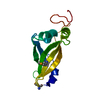



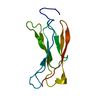
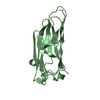
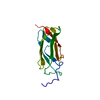
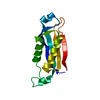
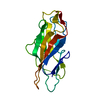

 PDBj
PDBj















